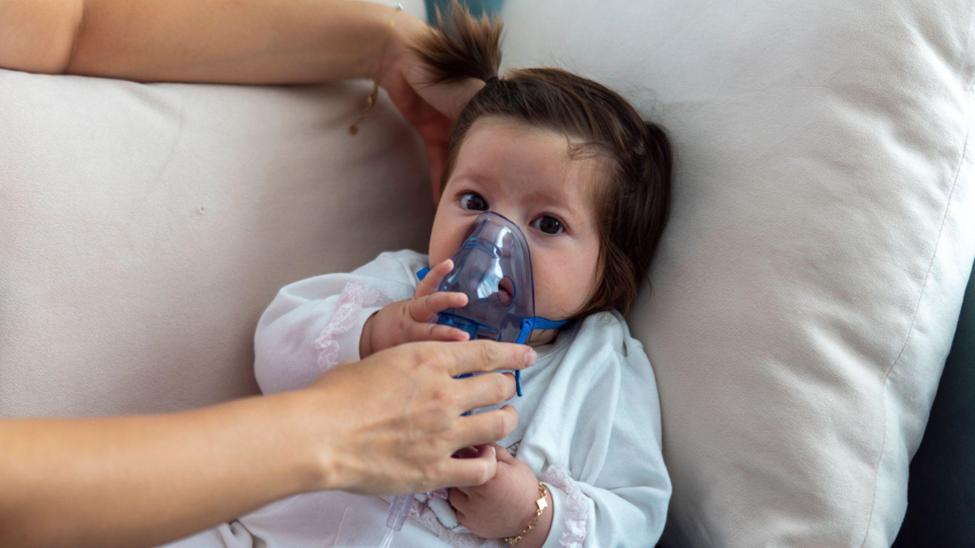
Understanding Cystic Fibrosis: An Overview of This Genetic Disorder
Cystic fibrosis (commonly shortened to CF) is a genetic disease that affects more than 100,000 people around the world.1 It causes the body to produce thick, sticky mucus that can affect certain organs.1 This mucus can clog the airways, leading to lung infections, and can block the pancreas, which affects digestion.2 This overview will help you gain a better understanding of cystic fibrosis and how to get help from pulmonologists at Crystal Run Healthcare.
The Genetics Behind CT: Understanding the CFTR Gene Mutation
Cystic fibrosis (CF) is a genetic disorder resulting from inheriting specific CFTR gene mutations from both parents.3 The CFTR gene, which stands for cystic fibrosis transmembrane conductance regulator, is essential for regulating the movement of salt and water in and out of cells.3 More than 2,000 identified mutations of the CFTR gene can lead to cystic fibrosis by affecting both the amount and function of the CFTR protein.3
While it is not necessary for the parents to have cystic fibrosis themselves, they must both carry at least one copy of the mutated CFTR gene to pass the condition on to their child.4 This means each parent is at least a carrier of the disease.4 Carriers often do not show any symptoms of CF because they have one working copy of the CFTR gene.4
A child must inherit one faulty CFTR gene from each parent to develop cystic fibrosis.3 Even if there is no visible family history of cystic fibrosis, a child can still develop CF.4 Chances of a child having CF are different depending on if one or both parents have the CF gene. Each child of carrier parents has:3
- A 25% chance of inheriting cystic fibrosis (one mutated gene from each parent)
- A 50% chance of being a carrier like the parents (one mutated gene from one parent)
- A 25% chance of inheriting two normal genes (one normal gene from each parent)
How CF Affects the Body: Beyond Just the Lungs
Cystic fibrosis affects the body's balance of salt and water due to issues with the CFTR protein, which is essential for managing how salt and water interact on body surfaces like the lungs.5
When this protein doesn’t work well, chloride gets trapped in cells and, as a result, water cannot hydrate the cell surfaces effectively.6 This imbalance causes the mucus in the airways to become dehydrated and thicken considerably.6 The mucus covering the cells then becomes thick and sticky, which causes difficulties in lung function and breathing.6
This thick, sticky mucus also harms the movement of cilia, the tiny hair-like structures that sweep mucus out of the airways.6 When the mucus dehydrates and thickens, it flattens the cilia, preventing them from functioning correctly.6 As the cilia cannot effectively sweep the mucus, it accumulates in the airways, further complicating the removal of mucus or sputum from the lungs and causing many of the respiratory symptoms associated with cystic fibrosis.6
In addition to affecting the body's ability to stay hydrated, CF can cause several health issues, including increased risk of bone fractures, the development of chronic sinusitis, and poor/slow growth.6,7,8,9
Digestive System Effects
Cystic fibrosis affects multiple systems within the body, including the digestive system, with a notable impact on the pancreas and liver.
In most people with CF, thick mucus blocks the pancreas's ducts, preventing digestion enzymes from reaching the small intestine.10 This blockage not only disrupts the digestion process, leading to symptoms such as pain, cramping, gas, and abnormal stools (which can be loose, greasy, and floating, or result in constipation and intestinal blockages) but also causes inflammation in the pancreas.10
This persistent blockage and inflammation can lead to scarring of the pancreas, which impacts its ability to produce sufficient insulin.11 This disruption in insulin production is a primary factor in the development of cystic fibrosis-related diabetes (CFRD), a unique type of diabetes prevalent among CF patients.11 According to Cystic Fibrosis Foundation Patient Registry data, approximately 19% of those with CF have CFRD.11
In the liver, CF can cause bile duct inflammation and blockage.10 This can prevent the gallbladder from working properly and gallstones, hardened deposits of bile, can develop.10
Reproductive System Effects
CF can result in the delayed onset of puberty in young men.12 Additionally, most men with CF have a congenital bilateral absence of the vas deferens (CBAVD), a condition where the vas deferens, which are the tubes that transport sperm to the penis, do not develop properly and are blocked by mucus.5 This can result in fertility issues as the sperm are unable to reach the semen.5
CF can result in menstrual irregularity for women, or the complete absence of menstrual periods related to poor nutrition, low body weight, and issues with lung function. While most women with CF can become pregnant, CF can lead to conception difficulties due to thicker vaginal mucus.14
Early Signs and Diagnosis: Newborn Screening and Sweat Tests

All newborns in the United States are tested for cystic fibrosis.15 This screening process identifies more than half of CF cases.15 However, it is important to note that many individuals born before 2010 may not have been tested for CF.15
The diagnosis of cystic fibrosis involves multiple methods. In newborns, screening typically starts with the measurement of immunoreactive trypsinogen (IRT) levels in the blood, which is a standard procedure across the U.S.15 If elevated IRT levels are detected, the screening process may either repeat the IRT test for confirmation and then proceed to a sweat test, or it may include a CFTR mutation test followed by a sweat test.15
In addition to the diagnostic process, it is important to recognize some of the early cystic fibrosis symptoms in newborns and young children, which can include:8
- Wheezing
- Persistent cough with thick sputum
- Stuffy nose
- Frequent lung infections
- Poor growth and difficulty gaining or reaching a healthy weight
- Intestinal blockage, especially in newborns
- Severe or chronic constipation
Understanding these symptoms can help in timely referral for cystic fibrosis testing and management, complementing the screening and diagnostic procedures already in place.
Complications of CF: The Range of Health Impacts
Cystic fibrosis can lead to a broad array of complications that affect multiple systems in the body and can significantly interfere with quality of life. These complications can include:8,16,17
- Malnutrition and impaired growth due to challenges in digestion and absorption
- Digestive system issues such as abdominal pain and gastroesophageal reflux disease (GERD)
- Chronic lung infections, frequently caused by bacteria such as Staphylococcus aureus ("staph") and Pseudomonas aeruginosa
- Bronchiectasis, a condition caused by long-term inflammation or obstruction of the airways, common in cystic fibrosis
- Pulmonary exacerbations, periods of shortness of breath, worsening cough, and mucus production due to increased bacterial load and inflammation in the airways and lungs
- Allergic bronchopulmonary aspergillosis (ABPA), an allergic reaction to the fungus Aspergillus in the lungs
- Hemoptysis, involving coughing or spitting up blood
- Pneumothorax (collapsed lung), which occurs when air enters the space between the lung and chest wall
- Musculoskeletal disorders including arthritis and musculoskeletal pain
- Mental health challenges such as anxiety and depression due to the chronic nature of the disease
- Reproductive health issues like infertility affecting both males and females
- Kidney issues from diabetes, certain antibiotics, or kidney stones
Treatment Options
Cystic fibrosis is a rare genetically inherited disease that cannot be cured.17 As a result, the main focus of treatment for people with cystic fibrosis is managing the symptoms they experience.9
Managing CF includes treating symptoms and helping prevent complications, and involves many approaches, like preventing and controlling lung infections, loosening and removing mucus from the body, preventing and treating blockages in the intestines, and ensuring proper nutrition.9
To achieve these goals, different medications can be used.9 Some medications target the CF gene itself, while others include antibiotics and anti-inflammatories to fight infections.9 Mucus-thinning drugs and inhaled medications are also commonly used.9 In addition, stool softeners and acid-reduction medications may be prescribed as part of a CF symptom treatment plan.18
Crystal Run’s Pulmonary Expertise: Advanced Care and Treatment Options for CF Patients
Cystic fibrosis is a genetic disease with many symptoms that can have wide-reaching effects on the body’s systems and organs. While the disease has no cure, a wide range of treatment options are available.
Crystal Run Healthcare’s fellowship-trained pulmonologists treat all aspects of pulmonary disease, including cystic fibrosis, using the latest technology and cutting-edge diagnostic equipment. Book your pulmonary appointment online, or call 845-703-6999.
Sources:
- National Heart, Lung, and Blood Institute. What Is Cystic Fibrosis?, Updated 11/21/2023. What Is Cystic Fibrosis? | National Heart, Lung, and Blood Institute, Accessed 3/27/2024
- National Human Genome Research Institute. About Cystic Fibrosis. About Cystic Fibrosis | National Human Genome Research Institute, Accessed 3/27/2024
- National Heart, Lung, and Blood Institute. What Causes Cystic Fibrosis?, Updated 11/21/2023. What Causes Cystic Fibrosis? | National Heart, Lung, and Blood Institute, Accessed 3/27/2024
- American Lung Association. Learn About Cystic Fibrosis, Updated 11/17/2022. Learn About Cystic Fibrosis | American Lung Association, Accessed 3/27/2024
- MedlinePlus Genetics. Cystic Fibrosis, Updated 7/6/2021. Cystic Fibrosis | MedlinePlus Genetics, Accessed 3/28/2024
- Cystic Fibrosis Foundation. Basics of the CFTR Protein. Basics of the CFTR Protein | Cystic Fibrosis Foundation, Accessed 3/28/2024
- Cystic Fibrosis Foundation. Bone Disease and CF. Bone Disease and CF | Cystic Fibrosis Foundation, Accessed 3/28/2024
- MedlinePlus. Cystic Fibrosis, Updated 2/24/2024. Cystic Fibrosis | MedlinePlus, Accessed 3/28/2024
- Cystic Fibrosis Foundation. About Cystic Fibrosis. About Cystic Fibrosis | Cystic Fibrosis Foundation, Accessed 3/28/2024
- Cystic Fibrosis Foundation. The Digestive Tract. The Digestive Tract | Cystic Fibrosis Foundation, Accessed 3/28/2024
- Cystic Fibrosis Foundation. What Is CFRD? What is CFRD? | Cystic Fibrosis Foundation, Accessed 4/18/2024
- Cystic Fibrosis Foundation. Puberty in Male Adolescents With CF.Puberty in Male Adolescents With CF | Cystic Fibrosis Foundation, Accessed 3/28/2024
- Cystic Fibrosis Foundation. Sexual and Reproductive Health Issues in Women With CF.Sexual and Reproductive Health Issues in Women With CF | Cystic Fibrosis Foundation, Accessed 3/28/2024
- Cystic Fibrosis Foundation. Fertility in Women With CF.Fertility in Women With CF | Cystic Fibrosis Foundation, Accessed 3/28/2024
- National Heart, Lung, and Blood Institute. Cystic Fibrosis: Diagnosis, Updated 11/21/2023.Cystic Fibrosis: Diagnosis | National Heart, Lung, and Blood Institute, Accessed 4/18/2024
- CDC. Cystic Fibrosis.Cystic Fibrosis | CDC, Updated 5/9/2022, Accessed 3/28/2024
- National Heart, Lung, and Blood Institute. Cystic Fibrosis: Living With, Updated 11/21/2023.Cystic Fibrosis: Living With | National Heart, Lung, and Blood Institute, Accessed 3/28/2024
- Cystic Fibrosis Foundation. Use the Right Gastrointestinal Medications.Use the Right Gastrointestinal Medications | Cystic Fibrosis Foundation, Accessed 3/28/2024

 Optum Radiology at Crystal Run Healthcare
Optum Radiology at Crystal Run Healthcare Request medical records online
Request medical records online